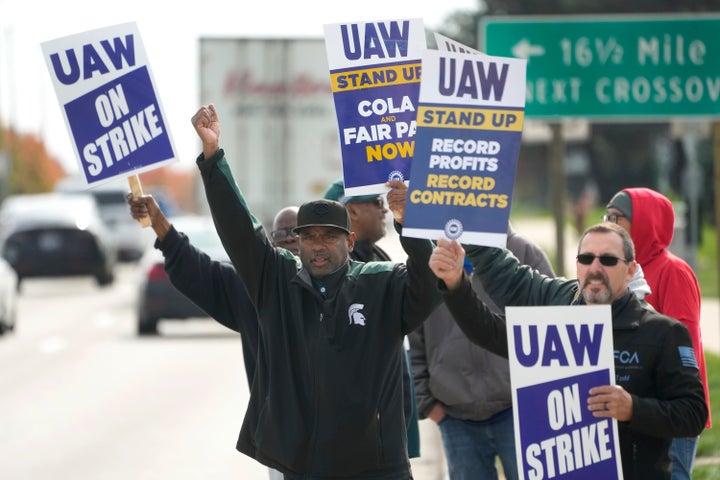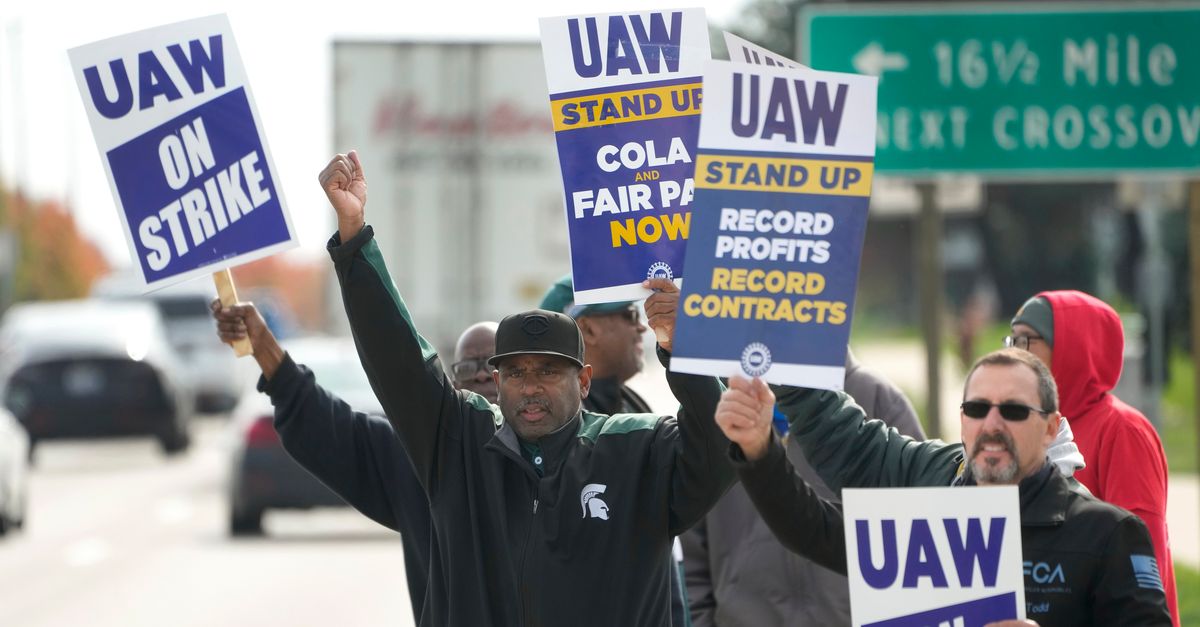U.S. unions managed to add thousands of members last year amid a wave of U.S. labor activism, but their footprint shrank slightly as an overall share of the workforce.
The number of workers belonging to a union increased by 139,000 to a total of roughly 14.4 million, according to figures released Tuesday by the Bureau of Labor Statistics. However, the overall share of workers belonging to unions (what’s known as union density) dropped slightly from 10.1% to 10% — the lowest on record since the data was first released in 1983.
Union density serves as a key measure of organized labor’s overall strength in the workforce and its ability to influence wages and benefits. Even though unions managed to add to the raw number of members last year, they could not keep pace with the strong growth of non-union jobs in the economy.
“The number of workers belonging to a union increased by 139,000 to a total of roughly 14.4 million.”
Liz Shuler, president of the AFL-CIO, a federation of 60 unions, said the numbers don’t tell the whole story, noting the high-profile strikes and new organizing campaigns afoot.
“Although union density remained flat in 2023, that doesn’t reflect the surging momentum that working people have carried into this year,” Shuler said in a statement. “Waves of workers across industries and geography are joining unions despite vicious union-busting campaigns by large corporations.”
While the private sector managed to add 191,000 union members, the number of union members in the public sector dropped by 52,000.

The public sector has generally been an area of strength for organized labor in recent years, with union density five times higher than in the private sector. But, as The New York Times reported last year, state and local governments have struggled to fill jobs amid a tight labor market, which has likely driven down the number of union members.
The gains in private sector union membership came courtesy of younger workers and people of color, according to an analysis of the BLS data by the Economic Policy Institute. The think tank said unions grew by 211,000 among workers younger than 45 and dropped by 21,000 among those 45 and older.
Meanwhile, unionization among workers of color accounted for the entirety of the overall increase in union membership last year, according to the EPI.
Many union supporters had hoped for or even expected an increase in union density last year.
The National Labor Relations Board, which oversees collective bargaining in the private sector, has reported a rise in the number of union election petitions over the past two years. Workers at previously non-union companies like Starbucks, Trader Joe’s and REI have been part of a burst of grassroots organizing, particularly among the young. But the number of election petitions remains low by historical standards.
“Even though unions managed to add to the raw number of members last year, they could not keep pace with the growth of non-union jobs in the economy.”
The overall figures underscore the long-term challenges facing the labor movement amid a decades-long decline. Workers have notched encouraging victories lately, including successful strikes by auto workers, actors, writers and nurses last year. But adding new members in significant numbers remains difficult, with many U.S. employers hostile to the very idea of collective bargaining.
Unions have been pushing the Biden administration and Congress to make it easier to organize, particularly through a bill known as the Protecting the Right to Organize Act. The legislation would make it easier to form unions and secure first contracts, but it stands virtually no chance of going anywhere while Republicans control the House and moderate Democrats in the Senate oppose certain measures.
Mary Kay Henry, the president of the 2 million-member Service Employees International Union, noted in a statement on the membership data that unions are more popular with the general public now than they have been in decades.
“The latest union density numbers are further proof that despite union popularity and organizing skyrocketing, the rules are still rigged against workers and it’s way too hard to win a voice on the job,” she said.

